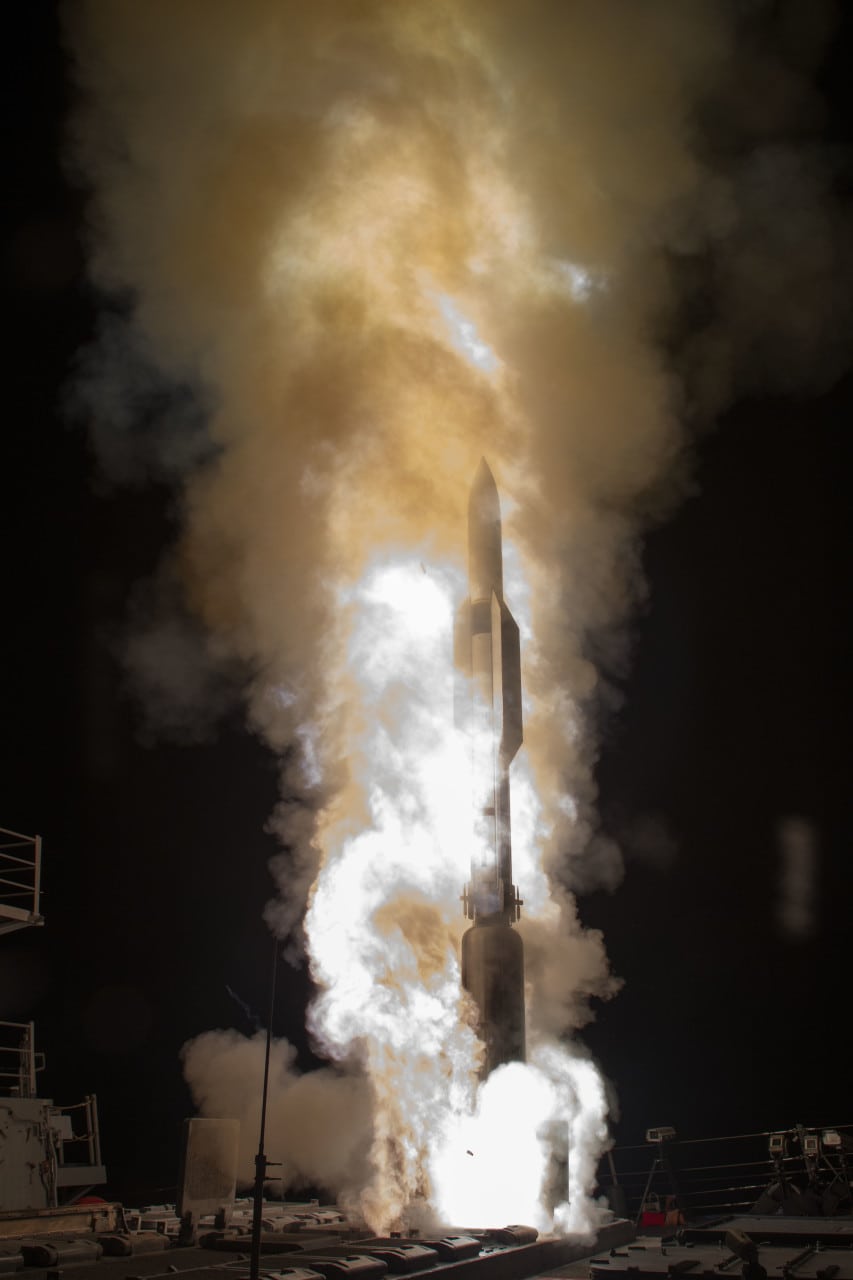Not a clear story. How come they had detected submarine long before but suddenly "get surprised" when the sub appear nearby the carrier
The First and Original disclosure was in CNN:
Key disclosure:
"The truth is, we track them tracking us, and we learn about their capabilities," said Robert Daly, who directs the Kissinger Institute on China at the Woodrow Wilson Center.
"Chinese submarines are growing in number, but they're still relatively noisy," he pointed out. "They're at least a generation behind us. And when they track us, we find out what they are capable of."
Additional reports were more like follow-ups.
Apart from the who detect whom first in those incidents, submarine is still a threat for surface ship, including carrier. ASW can minimize the threat but can't guarantee to protect a carrier from enemy sub.
I agree with you in principle.
ASW advances do not make submarines redundant for China in the larger view of its security dynamics and considerations. Sophisticated attack submarine(s) can be reliable force multipliers and broaden engagement possibilities in contested space(s) by extension. Therefore, PLAN is on the right track in its scale and scope of advances in my view.
There can be regions* and/or naval strike formations** with robust ASW arrangements.
*Japan have decent investments in ASW arrangements near its borders.
Defense Ministry refuses to formally disclose vessel's nationality or type because that could provide clues about the MSDF's detection abilities.

www.japantimes.co.jp
Recently there has been some speculation in the media regarding China adopting Rim-Driven Propulsion on its new Type 095 nuclear attack submarine.

www.globecomposite.com
Following reports of a foreign submarine cruising near the Satsunan Islands, the Japan Maritime Self-Defense Force deployed two warships, including a helicopter carrier transporting an array of helicopters dedicated to anti-submarine warfare. A Kawasaki P-1 maritime patrol aircraft was also...

www.aerotime.aero
Third link disclose detection of a submerged vessel with displacement of 8000 tons. I am not sure which vessel is this but Type 095 has displacement of 7900 tons.
**Americans have developed a variety of ASW assets which can be paired with an American CBG to significantly spike its ASW coverage in a theater of operations via sophisticated sensor-netting techniques (CEC). These include dedicated SURTASS platforms, ASW submarines, and unmanned ASW platforms. Therefore, preparation levels might vary according to circumstances and political considerations.
China is also attempting to replicate some of the American ASW advances.
A Chinese Navy ship intercepted and grabbed a small, unmanned underwater vehicle (UUV) being operated by a US Navy survey ship on Thursday in waters west of the Philippines, a US defense official confirmed Friday morning.

www.defensenews.com
China has recently recovered 14 underwater drones deployed in the Indian Ocean. These vehicles are very similar to the U.S. Navy drone seized by China in 2016.

www.forbes.com
Submarines might not deliver in the face of aforementioned arrangements but they can still be useful elsewhere and/or in other situations in the larger view of conventional warfare.
Chinese armed forces have made good judgement calls by fielding advanced warships such as Type 052D and Type 055 and advanced ASBM such as DF-21D and DF-26 respectively. These options can be useful in a number of situations as well.
It is however important to understand that Americans spend much on defense as well and they are very likely to develop solutions for perceived threats. They did as much for USSR and they will do as much for China and even Russia. This will be the dynamic for as long as USA is a economic and industrial juggernaut. USN has significant advances of its own to show since 2004 but these advances are being undersold in some sources including RAND due to obvious reasons. Americans are known for creating hysteria over advances of perceived rivals in the matters of defense in particular. Hysteria facilitates cash flows for further advances in the matters of defense by extension.
Another thing is that a war can be fought in a number of ways and potential outcomes might vary accordingly. If USA and China fight a war over Taiwan then this might prove to be a difficult military intervention for USA on behalf of Taiwan due to geographical proximity of Taiwan to China and Taiwan lacking in offensive capacity as well. If USA and China fight a war over Japan then China might not be able to do well in this theater because USA and Japan are a potent duo. A lot depends upon where a war is to be fought coupled with objectives defined for the needful. Therefore, there are no easy (and predictable) answers for these issues.
For a pure balistic missile, not quasi one.
Significant maneuvering efforts in the Midcourse phase of flight might lead to target miss if it is mobile in particular. Midcourse phase maneuvering is about course-corrections in large part. Intercept possibilities are rather good in the Midcourse phase therefore.
On the flip side, Midcourse intercept is easier said than done due to poor visibility of an RV in space and it would be even more challenging to engage with advanced PENAIDS in the mix (if deployed), and intercept possibilities might sound impractical in theory. USA have significant advances to show in this domain by virtue of its Cold War era surveillance apparatus which took many years to develop, operationalize, and improve in the thick of Cold War, and could be fine-tuned for BMD missions after much surveillance as well as significant advances in computational technologies.
This is 1980s homework:
The U.S. Department of Energy's Office of Scientific and Technical Information

www.osti.gov
New generation of interceptors have emerged by now:
If Midcourse intercept does not succeed then SM-6 class interceptors will come into play NEXT.
Not clear how would the SM-6 hit the high speed maneuvering target and how big the probability to hit the target. Never been tested on the maneuvering war head.
They use SBIRS to monitor flight characteristics of all types of missiles in the world and develop mathematical models to help inform intercept possibilities for different types of missiles.
This disclosure from DOTE:
"In Phase 1 IOT&E, SM-6 demonstrated significant new capabilities against maneuvering targets, low-altitude targets, and targets with electronic countermeasures, successfully completing 7 of 12 intercept attempts."
- was in 2012, and OLD news now.
This disclosure:
"The earlier SM-2 can intercept low-flying targets over land “in some scenarios,” Campisi told me, but that missile relies on the ship to continually “illuminate” the target with its radar. SM-6 has its own built-in targeting radar, more range, and much more capability to intercept a maneuvering target. It will also be able home in on a target too distant for the ship that launched it to detect, using data relayed from other ships or aircraft over the Navy’s future NIFC-CA battle network."
- was in 2014, and OLD news now.
You wouldn’t expect the Navy to test its weapons in the desert. But that’s just what happened Thursday at White Sands Missile Range, New Mexico, an Army facility 500 miles from the sea, where a Standard Missile-6 successfully intercepted a mock cruise missile flying low and slow over land...

breakingdefense.com
This disclosure:
The agency called the test “complex” but would not elaborate. It was designated Flight Test Standard Missile-27 Event 2 (FTM-27 E2) and seemed to mirror many elements of the first salvo SM-6 test intercept of an MRBM target in Dec.2016.
That test, FTM-27, had two SM-6s fired in immediate succession. The first interceptor was unarmed and designed to only collect test data while the second interceptor carried an explosive warhead and intercepted a Lockheed Martin-built target missile in its terminal stage (Defense Daily, Dec. 15, 2016). MDA did not confirm by publication time if this test copied that test style.
The Missile Defense Advocacy Alliance, a nonprofit that advocates for missile defense advances and deployment, said at the time that the target in FTM-27 emulated a Chinese Dong-Fen 21 (DF-21) ballistic missile equipped with a maneuverable re-entry vehicle and designed to destroy American aircraft carriers.
- was in 2017, and OLD news now.
The Missile Defense Agency (MDA) conducted its second successful missile defense flight and intercept test of a Standard Missile-6 (SM-6) against a

www.defensedaily.com
Two missiles launched from the guided-missile destroyer USS John Paul Jones (DDG-53) bullseyed a complex medium-range ballistic missile target in a successful test off Hawaii, the Missile Defense Agency announced on Wednesday. The test put two Raytheon SM-6 Dual I missiles against the complex...

news.usni.org
New SM-6 Block 1B with hypersonic flight characteristics undergoing trials in the present:
The terse reference in a written submission by Navy officials to the House Armed Services Committee on March 11 also likely offers the first proof that the SM-6 Block 1B remains in development.

aviationweek.com
For this:
The Defense Department is eyeing Raytheon's Standard Missile-6 as a counter-hypersonic interceptor, a weapon already effective against "advanced maneuvering threats" and now slated for a flight test against a hypersonic boost-glide target in fiscal year 2023.

insidedefense.com
Chinese publication for reference:
https://www.intechopen.com/books/mi...guidance-algorithm-against-hypersonic-targets
DF-26 is very impressive ASBM in my view but American countermeasures are catching up as well. Nothing is sure-shot or convenient while attempting to wargame USA in the nutshell. This is how things are in this world for now.































